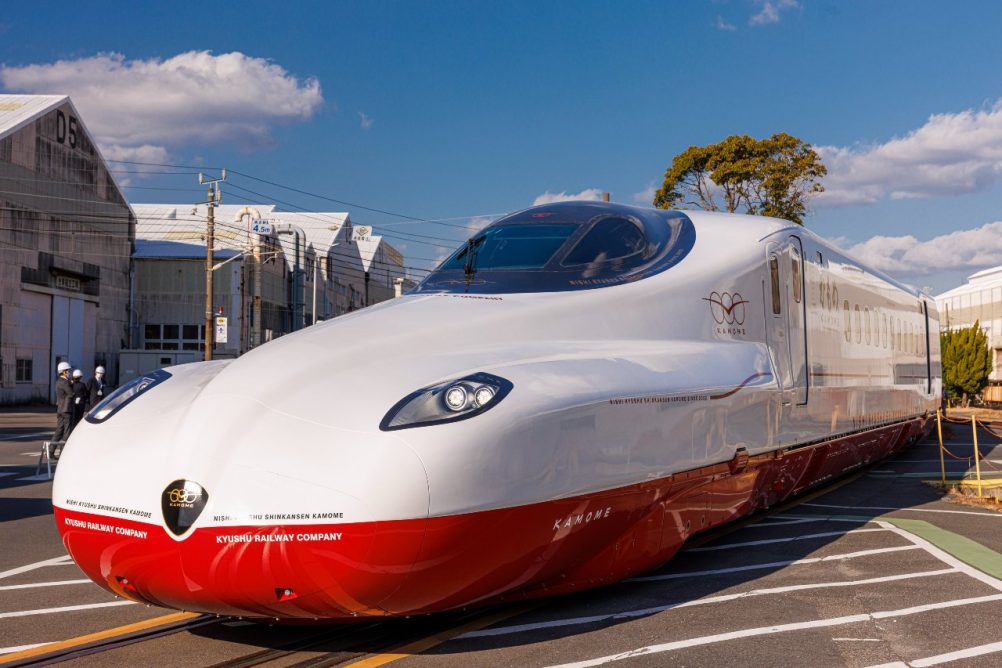Short route, big excitement: Japan’s new bullet train
Behind the launch of the new Shinkansen route
Words by Ute Junker
Photos supplied
It doesn’t seem like a lot. Given that there are almost 3000km of lines in the Shinkansen network that connects Japan from Hokkaido in the north to Kyushu in the south, the new 66km long West Kyushu service, launching today, is a small affair.
Yet when I attended a test run of the new bullet train route between the town of Takeo-Onsen in Saga Prefecture and the port city of Nagasaki, the Japanese media turned out in force. Around 140 journalists and camera crew were on board for the 20-minute journey aboard JR Kyushu’s new Kamome (“seagull”) train.
The new N700S model train, which will run at top speeds of 260km an hour, features both reserved and unreserved seating. It has lithium-ion batteries which can be used in earthquakes and other emergencies, so the train can continue to the nearest station without overhead power. It also has next-generation semiconductors and reduced air resistance, the result of a sharper nose and aerodynamic body design.
Planning for the new route has been underway since 1973, with the ultimate aim of connecting Takeo-Onsen with Shin-Tosu Station on the Kyushu Shinkansen line, increasing visitors and boosting local economies. The Shinkansen has been shown to bring huge economic benefits. Economic growth in Kagoshima Prefecture at the southern tip of Kyushu, 1,200 km away from Tokyo, which is now the southern terminus, was estimated at more than JPY46 billion (USD430 million) when Shinkansen service was extended to southern Kyushu in 2011.
Yet the Shinkansen’s impact is not solely financial. A symbol of postwar Japan since the first train launched a few days before the opening of the 1964 Tokyo Olympics, the Shinkansen embodies Japanese know-how. It carries around 477,000 passengers a day – around 6.5 billion since it launched almost 60 years ago – with an average delay of less than a minute. There has not been a single fatality on the network.
The launch of the new line is being celebrated in typical Japanese fashion with a wide range of omiyage, or souvenirs. A shop at Nagasaki station is already laden with colourful gifts, many emblazoned with the phrase, “Come on Kamome”. In addition to models of the train itself, passengers can buy specially-marked cans of Asahi beer, cakes and even Band-aids.
The new Shinkansen is not the only train being launched in Kyushu today. JR Rail is also unveiling the latest addition to its fleet of sightseeing trains, which travel at slower speeds along scenic routes and feature huge picture windows. The new service, called Futatsuboshi (“two stars”) 4047, will also travel between Takeo-Onsen and Nagasaki and will run once a day in each direction from Friday to Monday.



